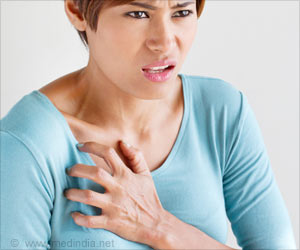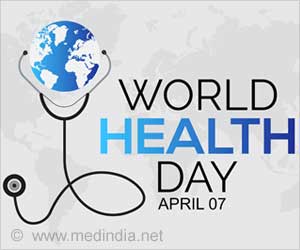Adding specific types of antioxidants to food consumed by fruit flies with tumors reversed the damage to their hearts – a finding suggesting that harm caused by free radicals was the likely link between cancer and cardiac dysfunction.
“Cancer becomes a systemic disease. It’s not just a tumor doing one thing,” said co-lead author Shubha Gururaja Rao, assistant professor of pharmacology at Ohio Northern University and an adjunct faculty member in physiology and cell biology at The Ohio State University.
Most of what is known about cancer’s link to heart damage relates to chemotherapy’s toxic effects and muscle wasting commonly experienced by cancer patients.
The researchers found that different cancer-associated genes affect the heart in different ways – a sign that genetic information could one day guide heart-protective treatment decisions in cancer patients.
“This suggests treatment could be tailored if you know what genes are causing the cancer or are abnormal in certain cancers,” said Harpreet Singh, co-lead author of the study and associate professor of physiology and cell biology at Ohio State.
“Above all else, we want to make clinicians aware that upon first detecting cancer, long before muscle wasting sets in or chemotherapy begins, other organs are getting the message and are being affected.”
The study is published in the journal Antioxidants.
An estimated 50 to 80% of cancer patients develop the muscle wasting condition called cachexia, which can lead to heart failure, and radiation and chemotherapy treatments are associated with toxicity-related damage to the heart muscle.
However, emerging research has suggested that heart problems can surface before cancer treatment or muscle wasting occur. The Ohio State team noted that a study published recently in the Journal of the America Heart Association reported the detection of abnormalities in heart tissue and cardiac function in human cancer patients before cancer treatment had begun.
In this new study, the Ohio State researchers injected breast cancer cells into mouse mammary glands and measured the animals’ cardiac function four weeks later. They found that two measures of heart pumping output, left ventricular ejection fraction and fractional shortening, had decreased by about 20% and 22%, respectively.
In fruit flies, the team overexpressed cancer-causing genes to trigger development of tumors in the flies’ eyes. The scientists observed significantly lower ejection fraction and fractional shortening – similar to what was seen in mice with tumors – as well as an increase in heart rate in flies with tumors.
The researchers found a total-body increase in the rate of production as well as a higher total number of free radicals – also known as reactive oxygen species – in fruit flies with tumors compared to controls. The rate of reactive oxygen species production was also significantly higher in mice with tumors compared to controls.
To test whether supplements could reverse the tumor-related heart damage, four antioxidants were added to the fruit flies’ food for seven days: Glutathione (GSH), vitamin E, CoQ10 or vitamin C.
Results showed that all but vitamin C restored the flies’ cardiac function to normal levels.
“We don’t know yet why one antioxidant works versus another,” said Rao, adding that because the flies ate the antioxidants in their food, researchers also don’t have definitive information on the antioxidant doses at this point.
She and Singh also emphasized that reactive oxygen species are just one identified mechanism of tumor-related heart damage, and that there is still a lot to learn about how antioxidants might fit into a treatment regimen.
Though this research zeroed in on one cancer-causing gene to study the mechanism of heart damage in fruit flies, the researchers initially tested the effects of several cancer-causing genes in the flies. The heart function affected and the intensity of the effects on the heart varied, depending on the gene. Rao plans to continue genetic studies in fruit flies and to test antioxidants’ restorative effects on the hearts in mice with tumors.
Singh is collaborating with clinicians at Ohio State and other institutions to collect blood samples from cancer patients who have heart failure.
“The signal is traveling from the tumor to the heart, and the tissue connecting these sites is blood – so the question is, are reactive oxygen species traveling through the blood?” he said. “On the clinical end, our priority is to look for the correlation between different oncogenic pathways and heart failure. Second, we want to see what the message is and whether we can prescribe antioxidants.”
Additional co-authors include Priyanka Karekar, Haley Jensen, Kathryn Russart, Devasena Ponnalagu, Shridhar Sanghvi, Sakima Smith and Leah Pyter from Ohio State and Sarah Seeley from Ohio Northern University (ONU).
The work was supported by Commonwealth Universal Research Enhancement Program grants, the W.W. Smith Charitable Trust, the American Heart Association, the National Institutes of Health, Ohio State’s Davis Heart and Lung Research Institute, and ONU startup funds.
Source: Newswise



